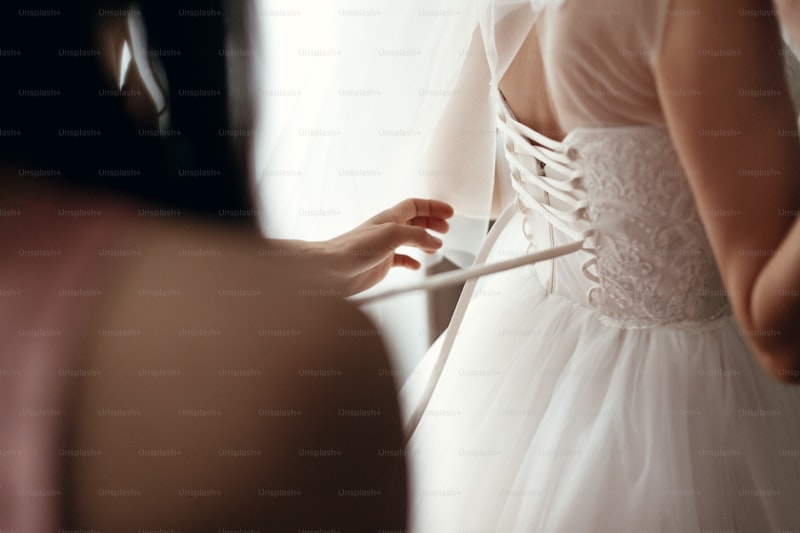Comprehensive Bridal Gown Alteration Guide: Your Essential Resource
Understanding Bridal Gown Alterations
Planning a wedding is a whirlwind of emotions, decisions, and obligations, and selecting the perfect bridal gown is one of the most significant aspects of this journey. However, finding the perfect gown often leads to the need for alterations. This Bridal Gown Alteration Guide serves as your ultimate resource for understanding the intricacies of gown alterations, ensuring you look stunning on your special day.
Why Are Bridal Gown Alterations Necessary?
Bridal gowns are typically made for a general size, which means that most brides require modifications to achieve a perfect fit. The need for alterations can arise due to several reasons:
- Body Shape Changes: Many brides experience changes in their body shape or weight as the wedding date approaches.
- Preferred Fit: Some brides desire a tighter or looser fit than what the gown provides.
- Design Adjustments: Brides might want to modify design elements like neckline or sleeve styles.
Common Alterations for Bridal Gowns
There are several common types of alterations brides should be aware of:
| Type of Alteration | Description |
| Hem Adjustment | Shortening or lengthening the skirt to suit your height and footwear. |
| Taking In/Letting Out | Adjusting the bodice for a tighter or looser fit around the torso. |
| Strap Adjustments | Changing the length or style of straps for better support or aesthetic appeal. |
| Adding/Removing Features | Incorporating or eliminating elements like lace, beading, or sleeves. |
| Modifying the Bust Line | Adjusting neckline styles for modesty or personal preference. |
The Alteration Process
Understanding the alteration process can help ease the stress of preparing your bridal gown:
1. Initial Consultation
Start with a fitting appointment at a reputable alterations shop. Bring your wedding shoes, undergarments, and any accessories you plan to wear to the fitting. A skilled tailor will assess your gown and discuss your preferences.
2. First Fitting
During this session, the tailor will make the initial adjustments. It’s essential to communicate your vision, as well as any changes you might want for comfort or style.
3. Second Fitting
The second fitting usually takes place several weeks later. Any further adjustments will be made during this session, ensuring the gown is becoming exactly as desired.
4. Final Fitting
The final fitting occurs close to the wedding date. This is a crucial appointment where all final tweaks are made. Make sure to try on the gown with your accessories to ensure a cohesive look.
Timeline for Bridal Gown Alterations
Timing is everything when it comes to alterations. Here’s a general timeline to follow:
- Book your gown fitting 6–8 weeks before the wedding.
- Attend the first fitting 4–6 weeks prior.
- Schedule the second fitting 2–4 weeks before the wedding.
- Final fitting should be done 1–2 weeks prior, making sure your gown is picture-perfect.

Finding a Trustworthy Alteration Specialist
Choosing the right tailor is vital for successful alterations. Here are some tips on how to find a trustworthy professional:
- Recommendations: Ask friends and family for their recommendations or search for reviews online.
- Experience: Look for tailors who specialize in bridal wear and have extensive experience working with delicate fabrics.
- Portfolio: Request to see previous work or testimonials to assess their skills.
Cost Considerations
The cost of alterations can vary widely based on several factors, including the complexity of the changes and the tailor's experience. Traditional ranges in the United States for bridal alterations typically range from $150 to $600. Here’s a breakdown:
| Type of Alteration | Estimated Cost |
| Hem adjustment | $50 - $150 |
| Taking in or letting out | $50 - $200 |
| Strap alteration | $20 - $100 |
| Adding/removing features | $50 - $300 |
| Complete custom alterations | $300 - $600+ |
Frequently Asked Questions about Bridal Gown Alterations
Brides often have questions concerning alterations. Here are some frequently asked questions:
Q1: How many fittings will I need?
A1: Most brides will require at least three fittings: an initial fitting, a second fitting for adjustments, and a final fitting shortly before the wedding.
Q2: Can I alter my gown after purchasing it?
A2: Yes, most gowns can be altered after purchase. Just make sure to select a gown that allows for modifications.
Q3: What if I lose or gain weight before the wedding?
A3: Discuss any weight changes with your tailor as soon as possible. They can advise on what alterations might still be feasible.
Conclusion and Final Tips
Bridal gown alterations are a necessary step to ensure that your wedding dress looks and feels perfect on your special day. By following this Bridal Gown Alteration Guide, you can navigate the fitting process with confidence. Remember to start early, communicate clearly with your tailor, and take your time to make the necessary adjustments. Ultimately, ensuring that your bridal gown fits flawlessly will contribute significantly to your overall wedding day experience. Happy planning!